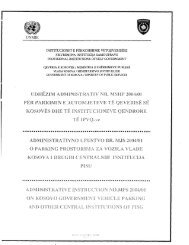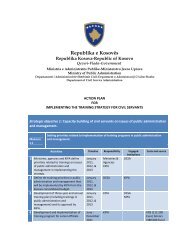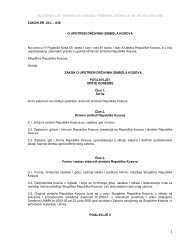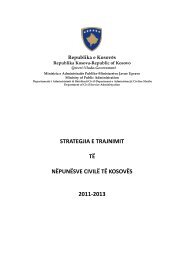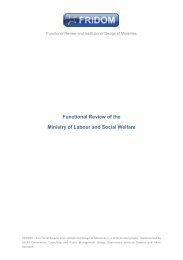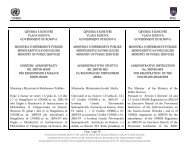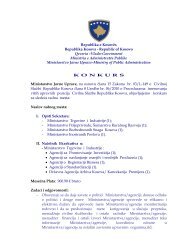Download
Download
Download
Create successful ePaper yourself
Turn your PDF publications into a flip-book with our unique Google optimized e-Paper software.
9. Once the structure is decided the staffing should be considered. There is little point in<br />
restructuring if the people with the right skills and capabilities are not placed in the jobs and if<br />
non performers remain. Job descriptions with the person specifications need to be<br />
developed for all positions in the MOH, followed by a placement process that is designed to<br />
ensure that appointments are made on merit and that people with the right skills are<br />
appointed to the positions. This might involve confirming some people in roles similar to<br />
ones they have now, moving them, replacing them, recruiting new staff and making some<br />
redundancies. The legal implications and costs of this part of the restructuring need to be<br />
considered and the legal rights of the employees complied with. A special law relating to the<br />
MOH restructuring may be required if there are provisions in the law that prevent an effective<br />
approach to the restructuring.<br />
10. There are back office functions that may be able to be aggregated and delivered for<br />
many government entities. There are also functions that could be considered for<br />
contracting out to national and international providers, such as testing pharmaceuticals,<br />
some tertiary health services, medical training, etc. Further work on the Institutional<br />
Development Plan could consider this.<br />
Beginning in the coming year and extending over the medium term<br />
Changes to agency arrangements: hospitals, inspectorates, other agencies, boards<br />
11. Consider increasing the ability of hospitals and other agencies to manage resources<br />
alongside introducing incentives for performance (such as improving the alignment of<br />
the budget to outputs) and adequate controls. 2 The draft changes to the Health Law in<br />
appendix G provide a potential framework for doing this, but considerable work would need<br />
to be undertaken to implement these changes. Other agencies including the National<br />
Institute for Public Health, Centre for Telemedicine, and the Kosovo Medicines Agency could<br />
also be brought within this governance and accountability framework as appropriate. This<br />
framework includes forecast financial statements, forecasts statements of service<br />
performance, reporting against these forecasts, and service agreements/contracts with<br />
reporting against these, monitoring and external audit of service performance. In addition the<br />
MOH could offer to be a pilot for aspects of performance based budgeting involving the<br />
hospitals as a way to develop, test and prove ways to improve performance and thereby<br />
gain the credibility to seek increased flexibilities in the management of resources.<br />
12. Consider options for improving the arrangements for licensing and inspectorates.<br />
This report has not covered these areas in detail but raises some issues and options,<br />
including the possibility of combining the functions of some licensing boards.<br />
13. Continually monitor progress with the reforms and make adjustments when<br />
necessary. Ensure that the changes are managed in a way that the MOH can deliver on<br />
critical accountabilities and can manage risks to its performance.<br />
2 The term “agency” is used in a broad sense in this report to cover institutions that are not the MOH or its departments<br />
and offices. It includes hospitals, NIPH, KMA, and others.<br />
7



